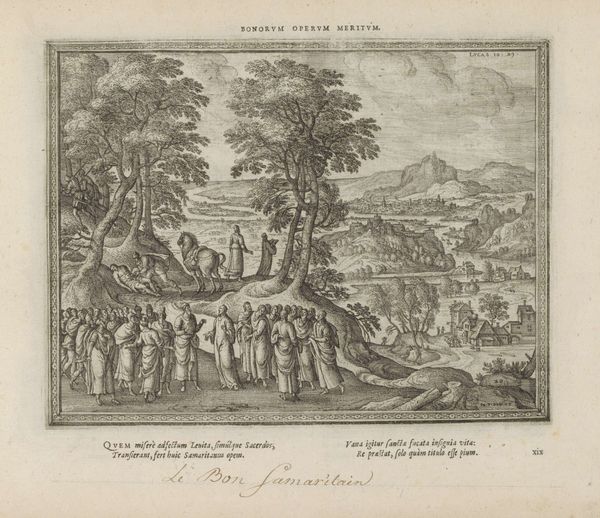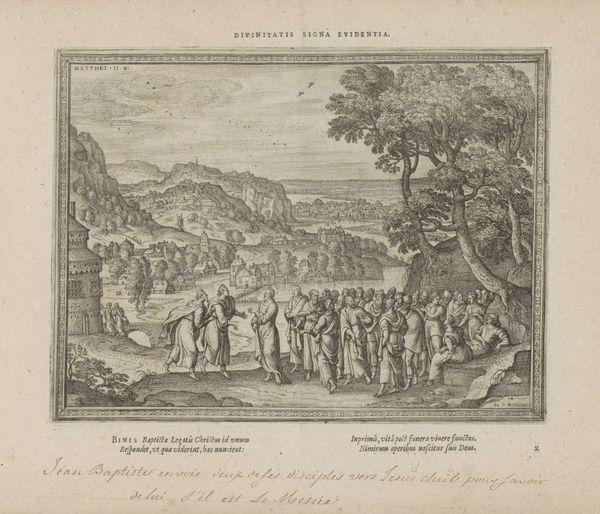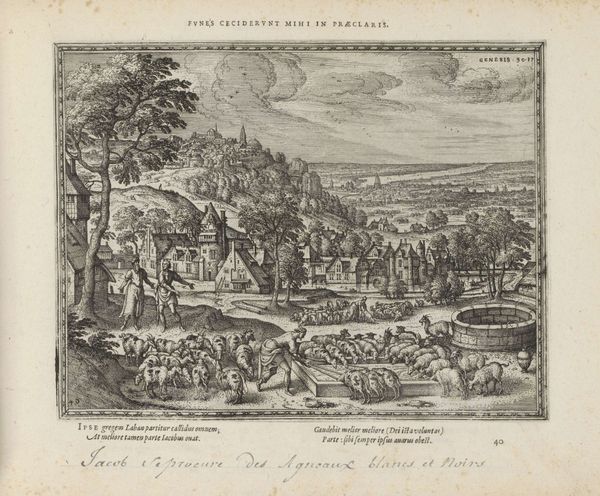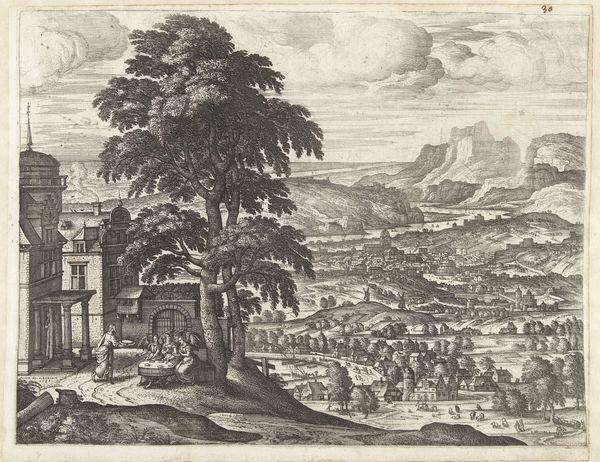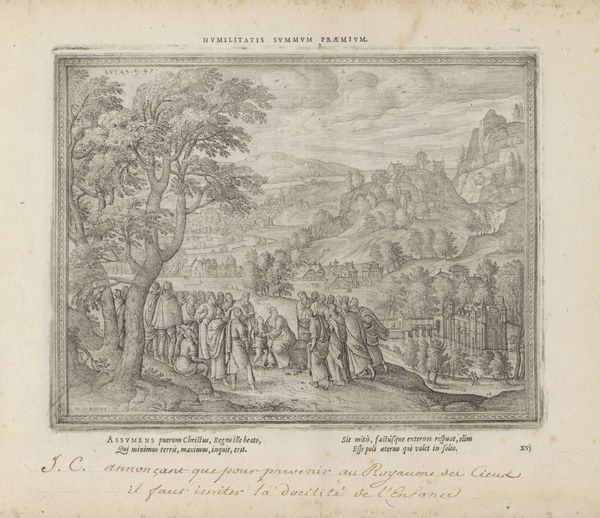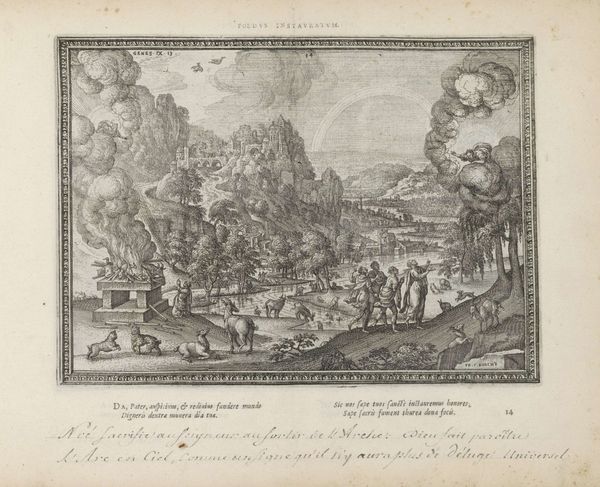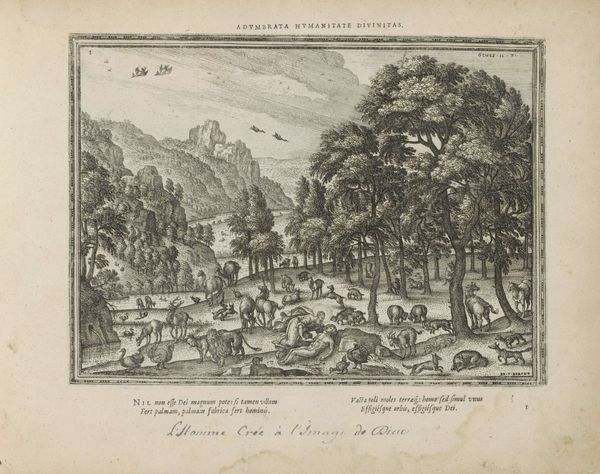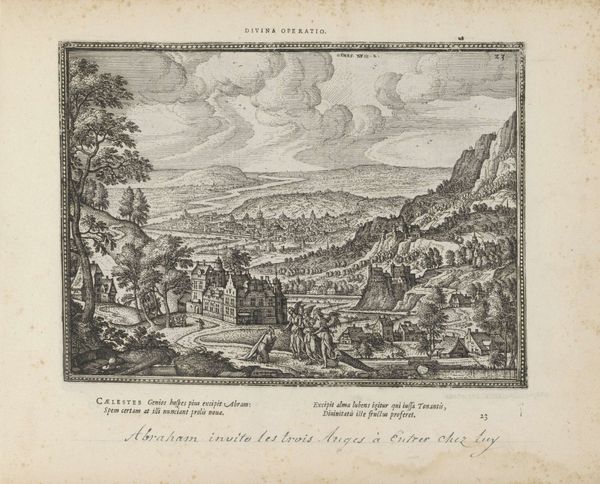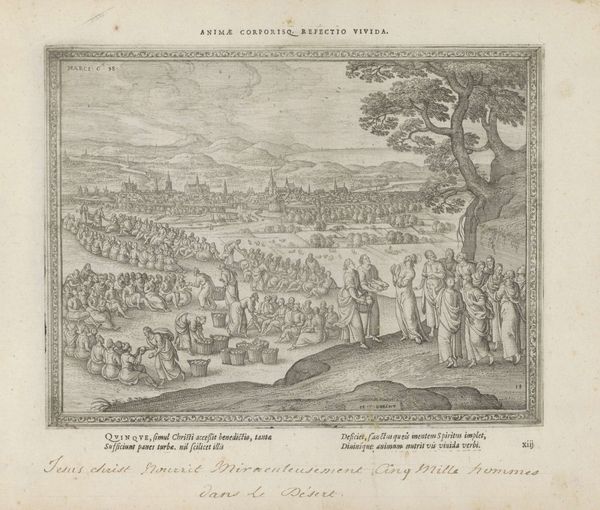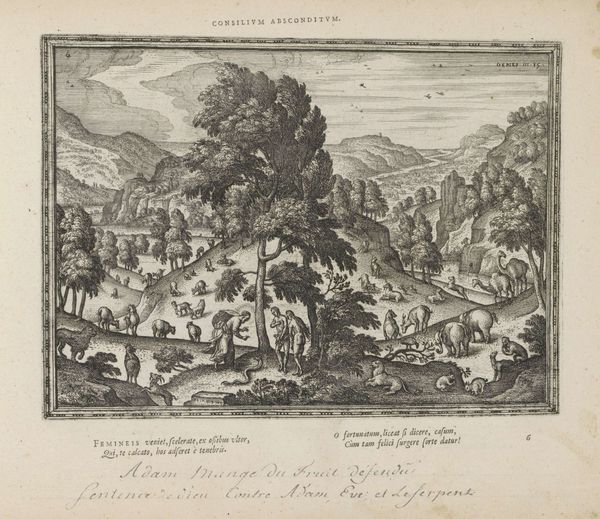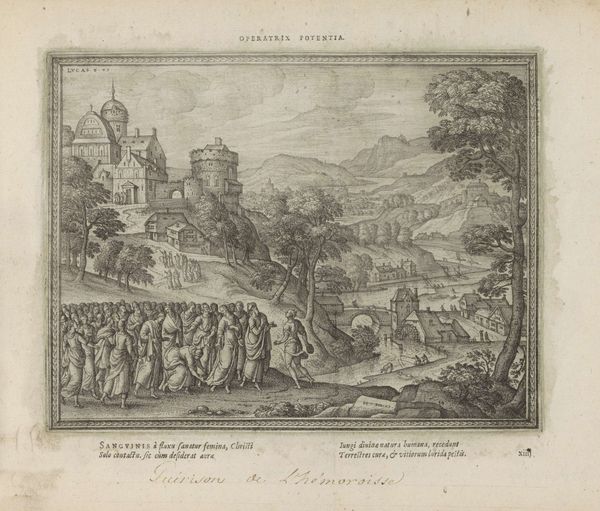
print, engraving
# print
#
landscape
#
figuration
#
history-painting
#
northern-renaissance
#
engraving
Dimensions: height 187 mm, width 247 mm
Copyright: Rijks Museum: Open Domain
Curator: This engraving, likely dating between 1582 and 1613, is titled "Christus kiest zijn apostelen," which translates to "Christ chooses his apostles." It's currently housed here at the Rijksmuseum, and is attributed to Pieter van der Borcht the Elder. Editor: It strikes me as incredibly serene, considering the subject matter. The landscape, with its softly rendered hills and the river winding through, dominates the composition far more than the figures of Christ and the apostles in the foreground. Curator: That interplay between the sacred event and the quotidian landscape is characteristic of Northern Renaissance art. It brings the biblical narrative into a recognizable, relatable setting. Consider how printmaking enabled wider distribution, changing access to religious iconography and ideas across social classes. Editor: True, the widespread dissemination is significant. And perhaps embedding the story within this gentler scenery softens the power dynamics, or invites the viewer to reflect on the landscape as part of Christ's choosing his followers in the countryside. But are we overlooking the social role and inherent privilege involved, or maybe the complex interactions between religion, landscape and control during this time? Curator: Well, landscape elements weren't simply decorative; they conveyed moral and spiritual meaning too. The high vantage point gives us a comprehensive view, implying divine perspective overseeing human action. This resonates with religious interpretations emphasizing a wider, preordained divine plan, fitting this context so well. Editor: I suppose by situating Christ’s choice within such an extensive vista, it connects to broader discussions surrounding free will versus determinism – who has access to, and indeed is included within the choices being made. Do you believe access was the defining factor back then? Curator: To a certain degree, the distribution of this image surely played a role, although religious views certainly were not adopted equally across all populations, and print making itself required infrastructure accessible to some, but not all. Still, looking back we see interesting discussions opening between what some deemed predestination and freedom within Christian beliefs. Editor: That really does give me another way to contextualize the landscape element as I think about what choices look like when it comes to landscape: extraction, management, or the recognition of it all in service of religion, power and authority. Thanks, that's given me a lot to consider as I look closer at this landscape and religious representation! Curator: Of course! Art constantly challenges our assumptions; revisiting historical and cultural roots opens a space where this artwork may continue sparking dialogue around power and authority, which were always at the core.
Comments
No comments
Be the first to comment and join the conversation on the ultimate creative platform.

